Student-Centered
Flexible furnishings, views of nature, open details, opportunities for movement, one-to-one technology, and creative wayfinding are crucial strategies for creating human-centered designs that celebrate:
The Whole Student
Design is known to impact behavior, health and wellness, and academic performance. In both intangible and tangible ways, the connections a student, an athlete, or a community member draws between a building and associated feelings of health and happiness, inquiry and autonomy, and collaboration and creativity can help inspire that person to reach his or her full potential. We believe there are core design tenets that can go a long way in supporting human-centered environments:
- Activity: Facilitating movement and healthy eating is a recommended strategy to help prevent and reduce obesity and contribute to healthier communities. Evidence-based design guidelines – such as the Healthy Eating and Physical Activity Design Guidelines for School Architecture (published by the CDC and PLOS ONE) – offer replicable planning tools that promote health for various communities at a variety of scales.
- Connectivity: Architecture should expand, not limit, access to the natural world. Connecting people to nature, instead of sheltering them from it, adds another full dimension to the learning experience that supports environmental education and stewardship of the natural world.
- Scalability: Every space and surface in a building should be scaled to support the diverse physical, intellectual, and social needs of an individual, group, and community – while realizing that each is a sum of its parts. Considerations for inclusion should interlace all design considerations and conversations. Flexible furnishings, views of nature, open details that invite participation and highlight activity, opportunities for movement, one-to-one technology, and creative wayfinding techniques are crucial strategies for creating human-centered design.
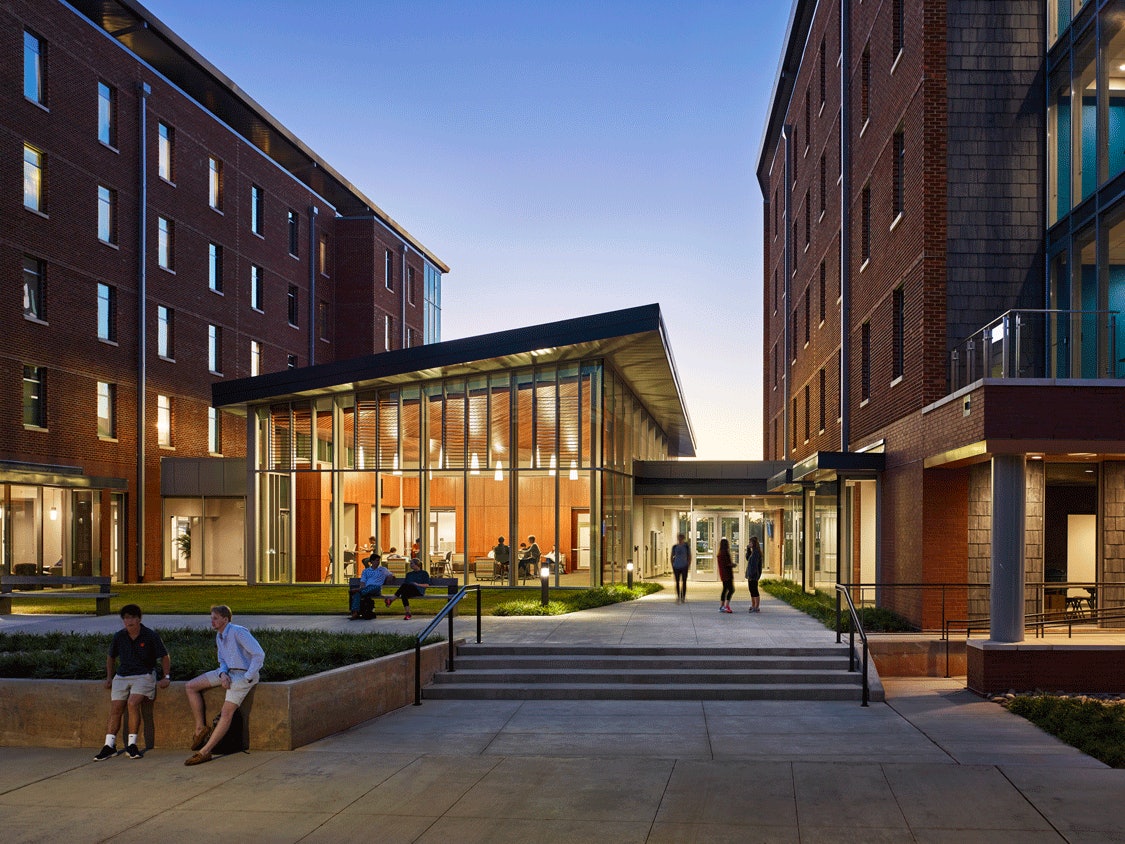
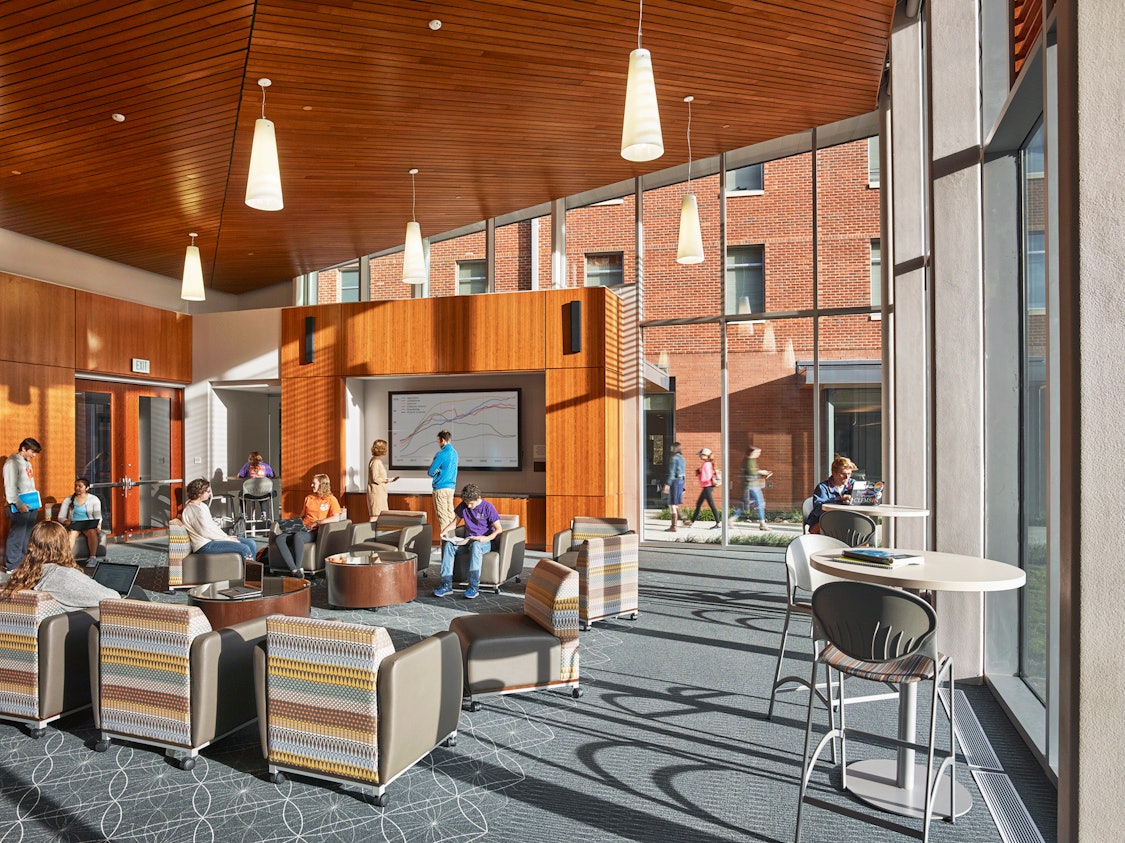
Community Connections
From our research collaborations, we know the two major health risk factors facing today’s students are high levels of anxiety / depression and social isolation, and that an antidote to these factors are feelings of belonging and connectedness. Thus, the importance of creating a sense of community in our work cannot be overstated.
We have been exploring strategies to create a sense of belonging across scales and building types. Our work on Georgia Tech’s Glenn and Towers Halls, Clemson’s Core Campus Complex, Charlottesville’s Brooks Family YMCA, and Liberty’s School of Music + Concert Hall were recognized with recent AIA state awards and, in the case of the Georgia Tech project, with a SCUP award for planning and design. These projects explore different ways of creating community between rooms, within floors, and between buildings, and build on decades of post-occupancy evaluations (POEs) from user groups to inform design decisions. Recent POE research from Clemson reveals statistically significant areas of impact where students' experiences living in Core Campus’ Honors College are directly tied to feelings of community, belonging, and identity.
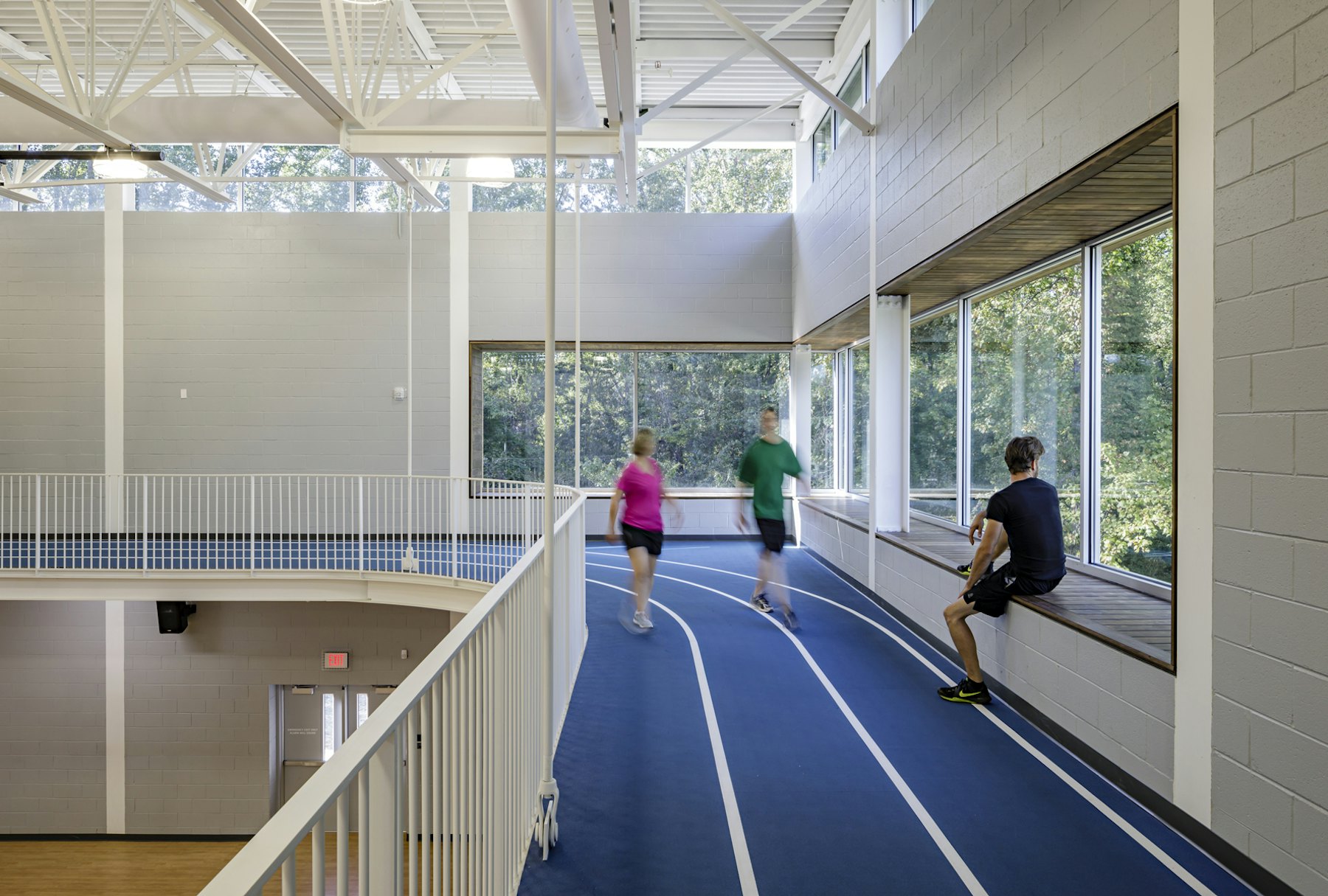
Evidence-Based Design
VMDO collaborated with the Center for the Built Environment to develop a custom POE module to deploy in conjunction with CBE’s standard post occupancy survey that asks questions about safety, community, health and wellness, and sustainability. Bluestone Elementary School is the first project to deploy this new questionnaire. Feedback on the design has been favorable, with 83% of respondents satisfied with the temperature of their workspace, 86% satisfied with the air quality, and 90% satisfied with the light quality. 80% of respondents said the building supports their physical health, and 90% responded that the building makes them feel happy.
As a firm dedicated to a culture of learning and continuous improvement, it is important to design based on what is known, while still creating opportunities to learn and apply innovation. By conducting POEs and contributing other research, we are able apply lessons learned at each interval of the design process that is shared with our clients, our collaborators, and peers to continuously elevate the conversion around human-centered design.
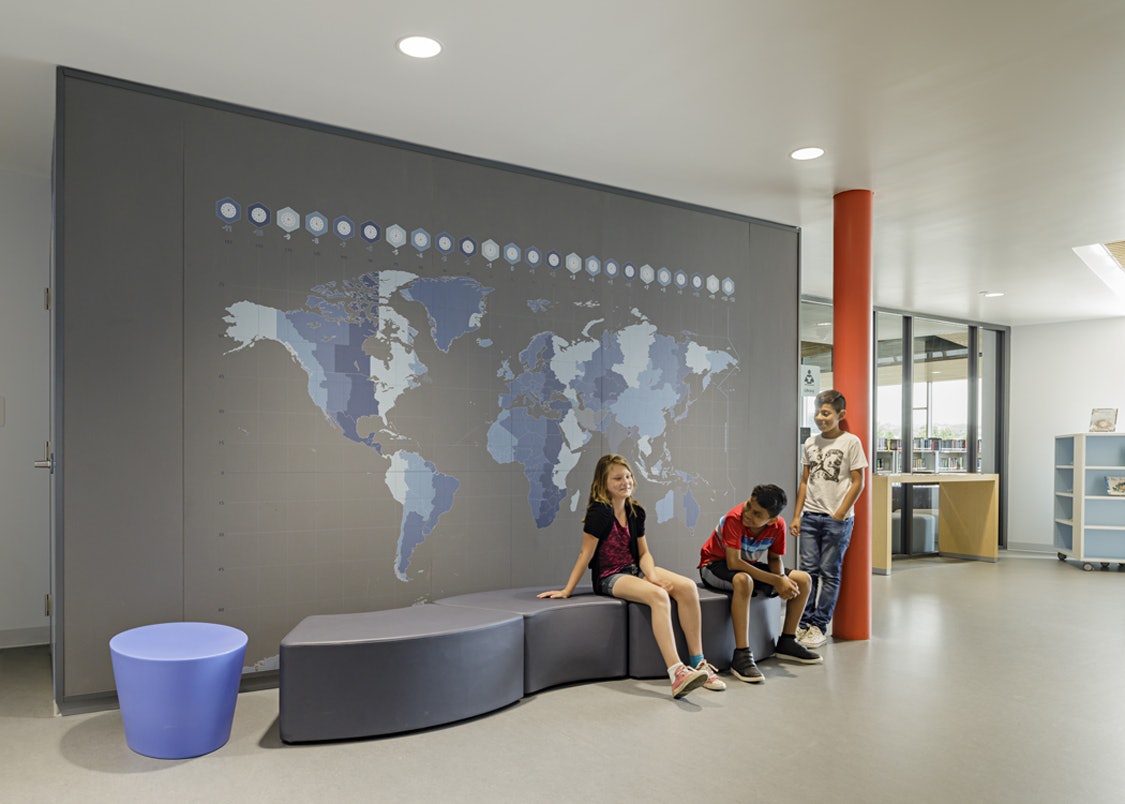
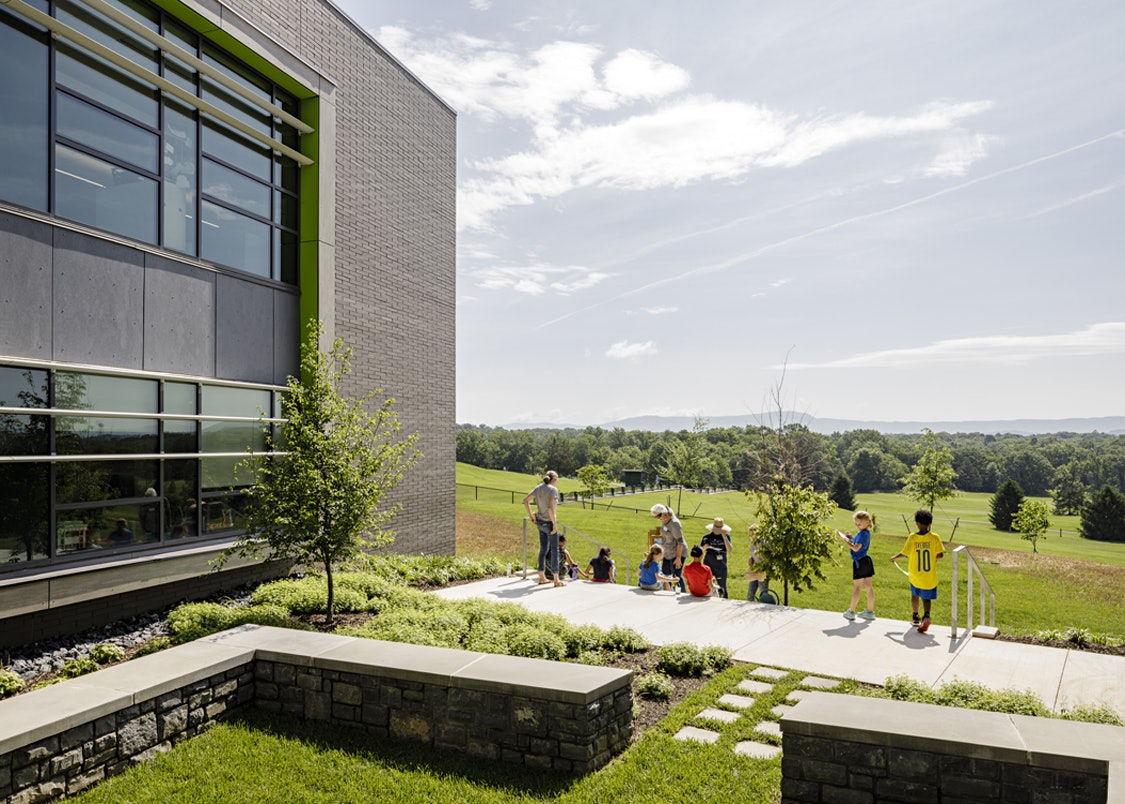
More on Student-Centered
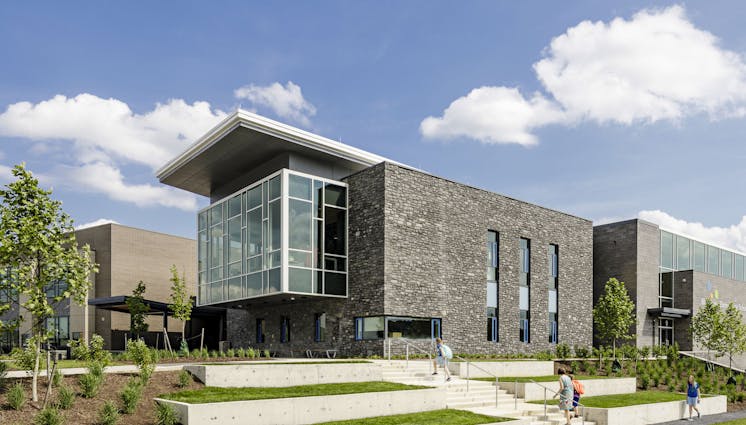
Bluestone Elementary School
Bluestone Elementary School features a diversity of spaces and scales for learning while creating welcoming…
Read More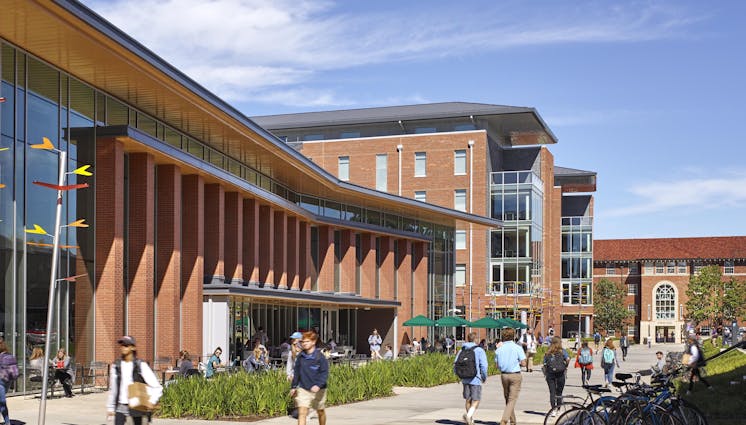
Clemson University Core Campus Dining, Housing + Honors College
The design strategy balanced building and landscape through tree-lined parkways, residential courtyards,…
Read More